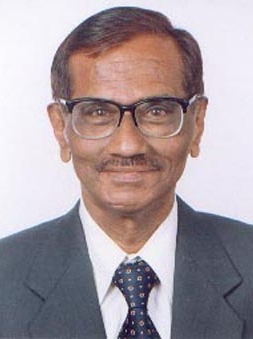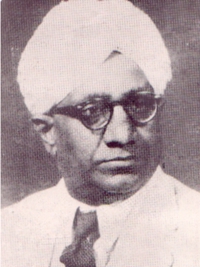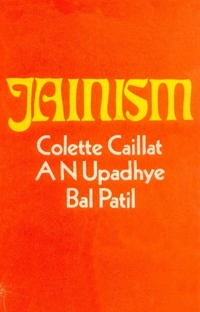Jainism has been primarily an Indian religion, and its spread outside India is negligible, if not doubtful. According to the latest Census of 1971, the Jains number 26,04,646, i.e. even less than ½ percent of the total population of India. Despite their broad divisions, namely, Digambara, Svetambara, and Sthanakvasis, and local subdivisions, the Jainas form a community with a basic religious and philosophical unity. They owe a reverential allegiance to Trithamkaras, the divine religious Teachers, such as Rsabha, Parsva and Mahavira; they believe in a set of philosophical doctrines: they profess a scheme of ethico-moral ideas; and they observe consequent religious practices. In the past, the Jains have contributed a substantial share to the cultural and intellectual heritage of India; at present, they belong more to the upper, both socially and economically, than to lower classes; and their activities and outlook are of great importance than is due to it on account of their numbers.
Apart from their being found as a mercantile class in various centers of trade and wealth, the Jains are more numerous in the western, central and southern parts of India than in eastern and northern. The attention of an outsider is attracted by certain traits of Jainism and its followers: their splendid temples, statues and works of art, their monks given to the pursuit of learning and piety; the influence of the lay-followers and their consequent benevolence to the society; their extreme kindness to the whole of sentient creation; and their strict vegetarian diet. In Maharashtra, Karnataka and Madhya Pradesh many of the Jains, in rural areas, are hereditarily devoted to agriculture; elsewhere they are a mercantile class. As they are scattered practically all over India, they show some different customs and practices. Their partiality for peaceful occupation is primarily due to their pacific religious principles.
Jains claim great antiquity for their religion, which, during the present period, is promulgated by twenty-four Trithamkaras. The first is Rsabha, of remote past; his name is detected in Vedas, and consequently some scholars have invested him with historicity; and the details about him given in the Bhagavata, a Hindu Purana, practically and fundamentally agree with those recorded by Jain tradition. The twenty-second is Neminath; he is associated with Krsna and attained liberation at Girnar, in Kathiawar. His life is symbolic of unique kindness to animals. The details about them belong more to the domain of mythology than to that of history. When we come to the last two prophets, we are very near the historical period. The twenty-third Trithamkaras is Parsvanatha, who can be assigned to eighth century B.C. Modern research has accepted him as a historical person. Some meager details about him are preserved in early literature. Parsva was the son of Asvasena, king of Varanasi, and his queen Vama. He lived for 30 years as householder and thereafter performed severe and testing austerities as an ascetic. That he was sheltered by a Naga chief when oppressed by Kamatha has perhaps some historical basis. After living for one hundred years he attained liberation on Mt. Sammeta (mod. Parasnath hill) in Bihar. He often gets the epithet a lovable or genial personality.’ His pupil Kesikumara lived at the time of Mahavira and held minor differences in dogmatic details, though the basic religious ideology was fundamentally the same as that of Mahavira. The twenty-fourth and the last Tirthamkara of the Jains is Mahavira, also called Vardhamana. He flourished just a few centuries after Parsvanatha. He was born in 599 B.C. at Kundagrama, near Vaishali (mod. Besarh), some 27 miles to the North of Patna in Bihar. He belonged to the Naya (Jnata) clan. His father Siddhartha was a chief of that locality. His mother Trisala or Priyakarini was the daughter of King Cetaka, and thus came from the ruling family of Licchavis, the most ancient republic of India about which we learn a good deal from a dialogue of Buddha; and of which Cetaka himself was the president. Tradition is not unanimous about his (Mahavira’s) marriage; according to another, he married Yasoda and had a daughter called Priyadarsana. At the age of thirty, he left home and started the career of an ascetic. Following the creed of Parsvanatha, he practiced severe austerities and faced calmly all sorts of hardships from unfriendly quarters. Through his religious meditations he attained Enlightenment: the knowledge he came to possess was free from spatial and temporal limitations. He himself was an embodiment of supreme religious life, and wandered preaching the religious path, a way out from worldly misery. He stressed the sanctity of life in all its forms, and this formed the basis of his moral values. The misery of Samsara was due to one’s karmas, which, therefore, must be annihilated in order to get summum bonum. Mahavira was connected with the royal families of eastern India; his mode of living won respectful allegiance from the high and low; his principles were universal in their appeal; and his metaphysics was based on common sense realism and intellectual toleration. It is no wonder, therefore, that the community of his followers, namely, monks, nuns, householders and houseladies, was pretty large and quite organized. He moved about preaching for thirty years never halting for a long time at one and the same place except during the rainy season, and at last got rid of this mortal body at the age of seventy-two, in 527 B.C., at Pava, in Bihar. The two royal clans, Mallaki and Licchavi, celebrated the occasion by a lamp festival, which is annually observed even to this day. The period in which Mahavira lived was undoubtedly an age of acute intellectual upheaval in the religious history of India; and among his contemporaries there were such religious teachers as Gosala, Buddha, and others. Mahavira like Buddha, his junior contemporary, was not required to go from teacher to teacher; but he accepted his hereditary creed of Parsva which was already well-established and started propagating the same. Mahavira left behind him not only a systematic religion and philosophy but also a well-knit social order of ascetics and lay followers who earnestly followed and practiced what he and his immediate disciples preached.
The history of the Jain religious order has many a bright spot here and there. After Mahavira it was led by eminent monks; it received patronage from kings like Srenika Bimbisara, Chandragupta, Kharavela, etc. and gradually its sphere of influence began to spread in the South with a band of followers; and this event is often looked upon as the starting point for the division of the community into Digambara and Svetambara which has survived to this day. Even from early times there must have been groups of monks practicing more or less rigorous courses of asceticism; thus affected the laity as well. The basic religious ideology has remained the same; but they differ among themselves on minor dogmas, mythological details and ascetic practices.
The rigorous asceticism and pious life of Jain monks naturally attracted the attention of kings, queens, ministers, generals and wealthy merchants who became inclined to adopt the Jain way of life. Both in the south and Gujarat the Jain faith received not only great patronage from ruling families but even some kings also become zealous Jainas; and all this was possible due to the influence of great Jain monks. The early medieval royal dynasties of the South, such as the Gangas, the Kadambas, the Calukyas and the Rashtrakutas extended their patronage to Jainism. Some Rashtrakuta kings of Manyakheta were zealous Jains, and Jain contributions to art and literature under their patronage are of great significance. Associated with this period is a galaxy of eminent poets and authors whose literary achievements under their patronage are examples of erudite scholarship. To this period belong Virasena, Jinasena, Gunabhadra, Sakatayana, Mahaviracarya, Puspadanta, Mallisena, Somadeva, Pampa, etc; and their contributions to Sanskrit, Prakrit, Apabhramsa and Kannada Literature and to technical branches of learning like mathematics, grammar and Tantra are of abiding value. The Rashtrakuta king Amoghavarsa (c.A.D. 815-77) was a follower or disciple of Jinasena, and appears to have embraced Jainism during the concluding part of his life. To him are attributed the Kannada Kavirajamarga, a work on poetics, and Prasnottara-ratnamalika, a didactic Sanskrit poem in questions and answers. In the South, petty Jain rulers survived the fall of the Vijayanagara empire, even till the advent of the English rule. In Gujarat, the Jain faith thrived more under the patronage of rich merchants than of the ruling dynasties. However, it is under the Calukya rulers of Gujarat, especially Sidharaja and Kumarapala, Jainism saw glorious days; and the Jain contribution to art and literature activity dawned in Gujarat since the time of Kumarapala, and the credit of it should go to Hemacandra and a host of Jain authors after him. In Hemacandra we have a versatile author whose literary contributions cover many branches of learning like grammar, lexicography, etc. Under the Muslim rule the Jains and their temples were molested here and there, but not perhaps on a very large scale. The Jain monks won respect even from Muslim rulers and received Firmans for the uplift of Ahimsa. Akbar bestowed on the Jain teacher Hiravijay the title ‘World Teacher’, and issued Firmans in response to his request prohibiting the slaughter of animals during the Jaina annual festival of Paryushana in places where the Jain lived. Important Jain families in Delhi and Ahmedabad, by virtue of their business connections and vast riches, wielded great influence in Mughal courts; some of their temples in Delhi have survived quite intact and some of them received Firmans from most of the Mughal rulers. In the Rajput states, the Jains occupied important positions of generals and ministers; and the names of Bhamashaha etc., are quite prominent in the annals of Rajasthan at the time of Rana Pratap who gave a stiff fight against the Mughals. Relics of Jain influence are still to be seen in Rajasthan where Jains live in large numbers. During the days of the East India Company, outstanding Jaina families like to Jagatsheth, Singhis, etc., acted as the state bankers, and naturally wielded great influence on the state policy.
The Jain contributions to Indian Art and Architecture arise essentially out of their socio-religious needs. The Jain caves and temples have served as residence for monks and places of worship; and among the objects of worship and religious sanctity there are the Stupas, foot-prints in stone, statues and free standing pillars (manasthambha). Some of the caves served the purpose of temples. The Hathigumpha caves in Orissa belong to the second century B.C. Later Jain caves are found scattered in different parts of the country In places like Madura, Badami, Tera, Ellora, Kalyangad, Nasik, Mangitungi, Girnar, Udayagiri, Gwalior, etc. The Jains are extremely zealous about temple building. As a place of worship, the temple is a social necessity, to build it is a religious duty and a pious act; and the monks constantly appeal to rich laymen that their localities should be equipped with temples. The result has been that we come across rich and fine temples in those parts of India where Jains have been influential. During the historical period, many kings have granted lands and villages to these temples; and to look after these estates and the socio-religious welfare of the community there arose the institution of Bhattarakas the religious heads, with their Matha or Monastery. Though a dying institution now, the Matha and Bhattarakas did play a useful role in the past. Beautiful temples, quite spacious and imposing and rich with architectural details, have been built both in the South and North. The Jain temples at Moodbidri, Karkal, Varang, Sravana Belgola! are rich in decorations; and they are situated either on a prominent or peaceful spot. The marble temples at Mount Abu and Palithana exhibit are artistic beauty in marble. They are living monuments of the religious zeal of the wealth builders and the exquisite skill of the mason. Some of these temples are such imposing resorts that on entering them one would easily forget the worries of the world. Like the Buddhists, the Jains too had their Stupas with the usual architectural decorations; those at Mathura belonging to the Satrap and Kushan periods are well known. The worship of the foot prints of Trithamkaras and Preceptors is quite in vogue with the Jains; their places of pilgrimage like the Parasnatha Hill are all marked with them. The worship of idols is a part and parcel of Jainism, almost from the beginning. The Jain temples contain statues of Trithamkaras etc., at times more than one. Digambaras worship nude images; the question of nudity does not arise if the statues are in seated posture; the idols as such have no dress and decorations, shown in carving; however, the Svetambaras, nowadays decorate them. Beautiful images cut in black stone, especially those of Parsvanatha, shaded by the seven-hooded serpent (sometimes the number of hoods goes to one thousand) are worshipped in the south. Many of them were broken by iconoclasts with sectarian hatred; but those that have survived attest to the high skill of statuary sculpture. The Jain statues are remarkable for their child like simplicity and passionless composure. The art of statuary has reached a high magnitude in the colossal nude statues of Bahubali which are among the wonders of the world. The one at Sravana Belgola in Mysore is 57 feet in height and stands clear on the summit of the hill, cut from a single block of granite and dating from the last quarter of the tenth century. During subsequent centuries, it was imitated at Karkal and Venur in South Kanara. A statue of Vrsabhanatha, greater in height, is found at Barwani in M.P. but it is cut on the side of a hill and known as Bawangaja. None of the equals the Sravana Belgola image in its bold conception and exquisite workmanship. As statues are more symbolic and idealistic and thus stand in contrast to Greek statues which are human and realistic. Bundelkhand too is rich in Jain statues, though in ruins now, of the eleventh and twelfth centuries. The huge rock-cut reliefs at Gwalior also are Jain and belong to the fifteenth century. The Jain statues are easily distinguishable from those of other sects by their simplicity if not nudity, and above all the serenity of the facial expressions. Metal statues are available in large numbers and of varying sizes. The bronze of Jivanta Svami is unique in its own way. Another piece of sculpture popularized by the Jains is the Manastambha, a free standing pillar with a statue on it. It has some religious meaning and stands in front of the temples. Excellent specimens of it are fond in the South at places like Karkal in South Kanara. One may passingly note the Jain Tower at Chitor in Rajasthan. It is 80 feet high and richly covered with sculpture. The Jain temples and statues have yet significance. They bear inscriptions recording useful contemporary information; they shed light not only on the social and religious history of the Jains but also supply important links in the political history of India.
There are excellent cave and temple paintings near Tanjore, Canjeevaram, Ravigumpha, Khajuraho, etc. Miniature paintings in paper and palm-leaf MSS are a branch of study By themselves; they are rich in presentation, often with gold colour as in the Kalpasutra and exquisite in workmanship. This Jain art has its own speciality.
The Jains have played a prominent role in the field of Indian literature and languages. Their monks have ample leisure, and devotion to leaning and propagation of religious morals are a part of their duties. The Jain authors never invested any particular language with an exclusive, religious sanctity. Language was, for them, just the means to an end; they picked up and language according to time, place and circumstances, and gave it a literary elegance if it so need for preaching their religious principles. They had in view more the masses than classes. Mahavira is said to have preached in Ardhamagadhi, perhaps a mixed Prakrit dialect meant to be intelligible even outside Magadha. The Jain canon in Ardhamagadhi consists today of forty-0five works of varied contents. The outlet of the canon was fixed at the Pataliputra Council in the fourth century B.C. But soon it was reduced to a state of disorder due to schisms in the community, due to discontinuity in the oral inheritance of spiritual knowledge caused by the death of eminent monks, and lastly, due to conditions of occasional famines. After a good many vicissitudes, a fixed form was given to the Jain Canon in the fifth century A.D. at Valabhi in Kathiawar. It contains a substantial amount of older material which was rearranged under a somewhat new classification of books. The present-day Canon is practically the same as that shaped at Valabhi. Soon it was subjected to a good deal of exegetical literature. The authenticity of this Canon was not accepted by the Digambaras, and naturally almost from the beginning of the Christian era they started compiling pro-canonical texts based on traditional knowledge which bear witness to much that was basic for all.
They study of the canonical and pro-canonical texts created among Jain monks a partiality for Prakrit, the language of the masses; and all along the Jain authors wrote in Prakrit their religious and secular works, many of which have came down to us. Sanskrit had become essentially the language of learned discussion and composition. The Jain authors could not afford to neglect it altogether. Consequently we possess a rich tract of Jain literature in Sanskrit which comprises religious treatises, logical and argumentative expositions, narrative tale, artistic prose and poetry, and secular branches of knowledge in grammar, mathematics, polity, etc. some of their works are of outstanding merit and still need to be studied critically. The attempt of the Jain monks had been primarily to address the masses; and as a result they came to write in Apabhramsa, which is a successor of Prakrit and essentially a literary language based on contemporary spoken dialects. The major portion of the Apabhramsa literature that is available today we owe to Jain authors; it consists of mainly religious and narrative tales in an extensive form. It is the study of this language that is helping the linguist to get some glimpses of the earlier phases of some of our modern Indo-Aryan languages. From Apabhramsa the Jain authors in the North naturally adopted Rajastjani, old-Gujarati, old-Hindi in various parts; and their literary activities were so extensive and continuous that we get here rich linguistic material so carefully recorded and preserved. In the South, the Jain contributions to Kannada and Tamil literature have been very valuable; in fact, the Jain authors were the pioneers in giving these languages a high literary status and enriched them with stylistic compositions and accessories of language study like grammar and lexicon. Treatises on technical subjects like mathematics, medicine, etc., indicate that their services to literature were not actuated merely by religious motives.
A few typical works may be mentioned here. Kundakunda’s Pravacansara and Samayasara, etc., Jinabhadra’s Visesavasyakabhasya Siddasena’s Sammai-sutta in Prakrit; Samantabhadra’s Apatamimamsa Jinasena’s Mahapurana and Parsvabhyudaya, Mahaviracarya’s Ganitasarasamgraha, Somadeva’s Nitivakyamrtaa and Hemachandra’s Yogasastra in Sanskrit; Puspadanta’s Mahapurana in Apabhramsa; Silappadikaram and Jivakacintamani in Tamil; Pampa’s Adipurana andRanna’s Gadayuddha in Kannada: all these works have a respectable position in Indian Literature.
These literary pursuits of Jain monks required rich MSS libraries in early days; the spread of the knowledge and distribution of scriptures have been looked upon as meritorious acts in Jainism; so the result was that the Jains developed the institution of MSS libraries attached to their temples and monasteries. The libraries grew in strength year by year and formed the centers of continued scholarly activities for generations together. Some of them contained MSS on all the branches of contemporary knowledge. Credit must be given to the custodians of these collections that sectarian bias never came in the way of collecting and preserving the MSS of other religions. It is in the Jain collections that we have been able to find rare MSS of non-Jain works. The basic outlook was essentially human, cultural and literary, though the religious needs were not ignored. The MSS libraries at Jaisalmer, Patan and Moodbidri are enviable treasures in our national heritage; and some of the MSS in them are important pieces of antiquity. At the end of these MSS we get a great deal of historical information about the authors, the donors and the contemporary rulers and teachers. For the historian of literature such information is quite welcome.
The students of Indian religion and philosophy have a special interest in Jainism. The history of Jainism goes back to an ancient period and its doctrines which have arisen out of early currents of thought of eastern Indian also gave rise to systems of philosophy like the early Samkhya and Buddhism. The metaphysical start is practically the same in Jainism and Samkhya, though the subsequent details are differently worked out; and the monastic institution of Jainism and Buddhism shows much that is common, though their philosophical outlook is not the same.
 Bal Patil
Bal Patil
 Prof Dr. Colette Caillat
Prof Dr. Colette Caillat
 Prof. Dr. Adinath Neminath Upadhye
Prof. Dr. Adinath Neminath Upadhye
